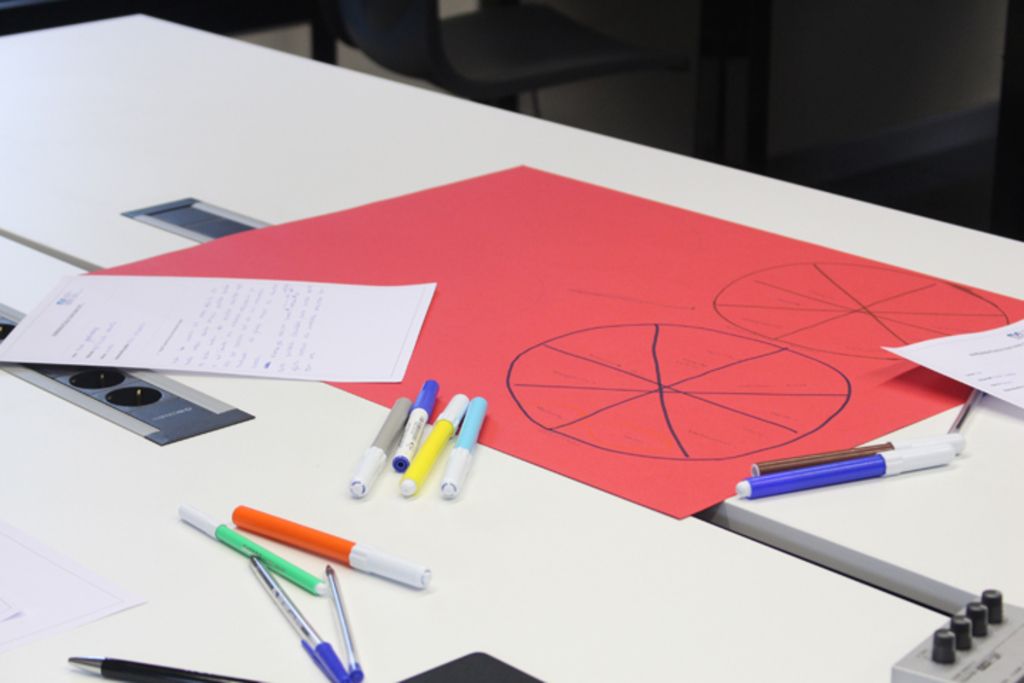Guiding Your Grading: A Comprehensive Method for Evaluating Your Students' Performance
Rock on, learning extraordinaire! Let's dive into the fascinating world of learner assessments and become lean, mean, knowledge-assessing machines.
First thing's first: what's an assessment? It's just the fun process of gathering info about a person's knowledge, skills, or attitudes. This data? It's used to make judgments about learning or competency. Assessments come in all shapes and sizes, from formal standardized tests to more casual conversations with your boss.
Now that we've got that cleared up, let's talk about the types of assessments we should be aware of:
- Formative Assessments: These bad boys are all about learning. They aim to identify knowledge gaps and inform instructional approaches. Think surveys, quizzes, polls, discussions, interviews, and observations. A training needs analysis? Yep, that's a formative assessment too!
- Summative Assessments: These assess at the end of a learning period and measure learning outcomes. Exams, projects, presentations, or tests that gauge whether a learning objective has been achieved? All summative assessments.
- Diagnostic Assessments: These are used to measure a learner's existing knowledge and skills before they embark on a new learning adventure. This helps create more targeted and personalized learning experiences.
- Benchmark Assessments: These assessments compare a learner's knowledge or skill set against a specific set of standards or expectations at a particular point in time. Think of them as checkpoints in your learning journey.
In addition to the above, there are two other approaches worth mentioning:
- Self-Assessments: These involve reflecting on learning progress, strengths, and weaknesses. Introspection, often used before and after a learning intervention, helps learners track their confidence and identify areas of focus.
- Authentic Assessments: These measure a learner's ability to apply their knowledge or skills in real-world contexts. This type of assessment focuses on problem-solving, decision-making, and task completion, rather than basic understanding.
So why are assessments so important in the learning and development process?
Imagine climbing a mountain blindfolded. You'd have a tough time reaching the summit if you couldn't monitor your progress. It's the same with organizational goals. Assessments provide valuable data that help shape and refine every aspect of your training program. This means you can move beyond assumptions and gain a clear picture of:
- Training Needs: Assessments conducted before your program reveal your learners' foundational knowledge and identify specific skill gaps. This ensures your training is tailored to individual needs and propels your learners toward organizational goals.
- Learning Effectiveness: Do your training materials hit the mark? Assessments are the ultimate feedback loop, revealing whether your learners are acquiring the knowledge and skills you need for them to succeed.
- Knowledge Retention: Assessments don't just measure initial learning. They track what gets lost over time, revealing knowledge gaps due to the forgetting curve. This enables you to step in at the right moment, before valuable skills vanish completely.
- Learner Feedback: Assessments don't just benefit the organization – your learners also gain valuable insights into their strengths and weaknesses. This empowers them to seek out further learning opportunities and take ownership of their learning journey.
- Program ROI: The data generated from your assessments helps quantify the impact of your training on learner performance and organizational goals. This provides a clearer picture of your program's value.
Remember, don't underestimate the power of assessments. Decades of research make it crystal clear: assessments are an integral part of effective workplace learning. And the research doesn't lie!
Here's what the research says:
- Better Instruction: Formative assessments help you refine your training materials and overall approach, leading to improved quality of instruction. Research shows that formative assessments can increase student satisfaction by 8.6%[3].
- Enhanced Engagement: Strategically implemented assessments foster agency, increase learner engagement, and help develop a sense of accomplishment[2].
- Boosted Confidence: Well-designed assessments that celebrate progress can increase learner confidence. This positive reinforcement encourages learners to persevere and take on new challenges[1].
- Improved Outcomes: Assessments don't just check knowledge. They improve learning outcomes [OECD review]. This means more focused study, a deeper understanding, and better retention of information[1].
In short, assessments are more than just a box-ticking exercise – they are an essential piece of the learning and development puzzle. So let's use them effectively to empower our learners and our organizations.
Now that we've covered the basics, let's talk about how to deliver an effective assessment:
- Goal Alignment: Start by defining your learning objectives. This will make it much easier to select an appropriate assessment. Use Bloom's Taxonomy to establish the level of mastery you expect.
- Consider Learner Needs: As you select your assessment approach, think about your learners' prior knowledge, learning preferences, and comfort levels. Adjust your approach to cater to individual needs.
- Select Your Approach: With your goals and learners in mind, choose the assessment approach that fits. Options include multiple-choice questions, open-ended questions, performance assessments (such as simulations, projects, or presentations), self-assessments, and authentic assessments.
Remember, there's no one-size-fits-all solution to assessing your learners. The most effective approach often combines various assessment types, offering a well-rounded picture of learner progress.
Ready to take your assessments to the next level? Follow these effective assessment practices:
- Offer Clear Instructions: Clearly communicate instructions and expectations for each assessment. Answer the "What's in it for me?" question to ensure your learners are motivated to perform at their best.
- Minimize Test Anxiety: High levels of anxiety have been shown to negatively impact cognitive performance, so create a calm and supportive testing environment. Focus on progress rather than success.
- Promote Fairness: Establish and use clear evaluation criteria to ensure consistent and fair assessment. If you're using a grading system, ensure it's transparent and you remain unbiased throughout the process.
- Provide Useful Feedback: Don't let assessments be a dead end. Offer timely and actionable feedback that guides learners on their next steps, and point them towards resources that help fill identified knowledge gaps.
- Gather Useful Feedback: Don't just assess learners – assess your assessments too! Gather feedback from learners on the clarity, fairness, and effectiveness of your approach.
Don't forget to take advantage of technology to streamline your assessment process. Digital assessment solutions can reduce your administrative burden and provide faster feedback to your learners. They can also adapt the difficulty level of questions based on a learner's performance.
Several online assessment and quizzing tools are available to you, such as Growth Engineering LMS or learning management systems and apps. Some platforms come loaded with assessment functionality, making it even easier to assess your learners effectively.
Now that you're armed with the knowledge and strategies you need to confidently evaluate your learners' progress, it's time to become an awesome assessor. Good luck, and happy assessing!
References:1. Hattie, J. (2009). Visible learning: A synthesis of over 800 meta-analyses relating to achievement. Routledge.2. Dunlosky, J., Rawson, K. A., Marsh, E. J., Nathan, M. J., & Willingham, D. T. (2013). Improving students' learning with effective learning techniques: Promising directions from cognitive and educational psychology. Psychological Science in the Public Interest, 14(1), 4-58.3. Black, P., & Wiliam, D. (1998). Assessment for Learning. Review of Educational Research, 68(1), 13-39.4. OECD. (2013). PISA 2012 Results: What students know and can do in reading, mathematics and science. Organisation for Economic Co-operation and Development.5. Alleyne, A., Böhm, B., Bromme, R., Erhardt, H., Kunter, M., Mackey, P., … Takacs, K. (2013). Handbook of Research on Educational Assessment. Springer Science & Business Media.
- Delving into the realm of education and self-development, it's crucial to understand that personal growth and learning are not separate entities; they are intertwined, with assessments serving as crucial tools for tracing our progress.
- Utilizing a diverse array of assessments, such as formative, summative, diagnostic, benchmark, self-, and authentic, can unlock the door to comprehensive learning and promote the achievement of both personal and organizational goals.






